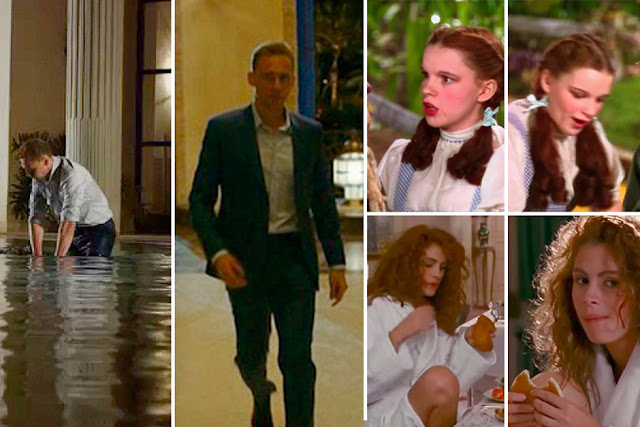For my first design of Dorian Gray, I was going to create a dream Sequence where he finds him self taking back the ageing process from the painting and wearing his cruelty and immorality. This scene would come after Sybil Vane had killed herself because of his cruelty and rejection. I was going to create a moral dilemma that would make Dorian decide between his vanity and morality.
In this scene Dorian would have greyer complexion, slight evil in his eye and as the book says of the painting. 'a touch of cruelty in the mouth'. I was going to exaggerate this in the dream sequence scene and create more shadows and redder eyes etc. I also wanted to showcase what the skin colouring might have looked like. At this time london was dingy and factories were being built everyday. The smog was a huge factor so I wanted to grey out his complexion to showcase this. I also wanted to try this because at this time rich people didn't spend a lot of time out doors so they were naturally pale. Dorian also went out a lot so I wanted to make him look a little tired if he was taking his looks back.
I practised this design on my model Ben.
Health and safety:
- Lay couch roll on the work space and set up your station neatly and safely.
- Make sure all tools and equipment are clean and sanitary ready for use.
- Cover the model with cape to protect from any fall out.
- Decant any products used to protect from cross contamination.
Tools and Products used:
- Cleanser, Moisturiser, toner.
- Cotton pads, buds and tissues.
- Couch roll
- Brushes
- Palette knife and Palette.
- Spatulas
- Supra-color palette Kryolan
- Translucent powder
- White Base Illamasqua
- Concealer Palette Kryolan
Technique:
- Prep the skin: Cleanse Tone and Moisturise.
- I then cleaned up the skin condition by covering any blemishes with the correct colour concealer.
- Apply the white base to the skin and buff in with Kabuki brush
- Set with translucent powder.
- Start to darken the under eyes with the Supracolor palette using the colours Black, white, and yellow for a slight sallow look.
- I also darkens the hollows of the skull with this colour to create a gaunt look
- I then exaggerated the wrinkles around Ben's eyebrow frown. to create a more sinister look and a more evil expression.
- I also exaggerated Ben's laugh lines to create the evil grin featured in the book.
- I then set this with the translucent powder.
Outcome:
This application went well. A few things I would change would be having Ben clean up the edges of his beard for the final assessment to create a cleaner finish and for me to be able to continue applying makeup down his neck. I asked him to do this for the final assessment though and he is happy to help. This would then create continuity down his neck and make the colour look like his natural skin colour. I would also define the frown more for photography purposes as this might not show up on camera. I would also try and create the hollows with powder after setting to see if it gave a more natural finish to the look.
I didn't particularity like the way this came out though and I feel that it looks quite amateur and Halloween like. I really want to capture what I feel Dorian Gray is all about so I have decided to look at more natural and subtle Makeup for My Character and concentrate on getting the period right and the skin clean and natural looking. Dorian was known for being very clean cut and almost pretty looking so I want to try this with my next Design. I want to stick with the story as it is and not continue with my Dream sequence. I know that in the television industry opportunities will come up for period dramas and knowing how to create accurate period makeup looks is very important, So I have decided to use this opportunity to practise my period makeup skills. This look can be just as challenging as maybe more elaborate makeup designs so I want to showcase my skills in this specific area.


























